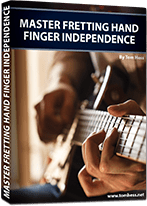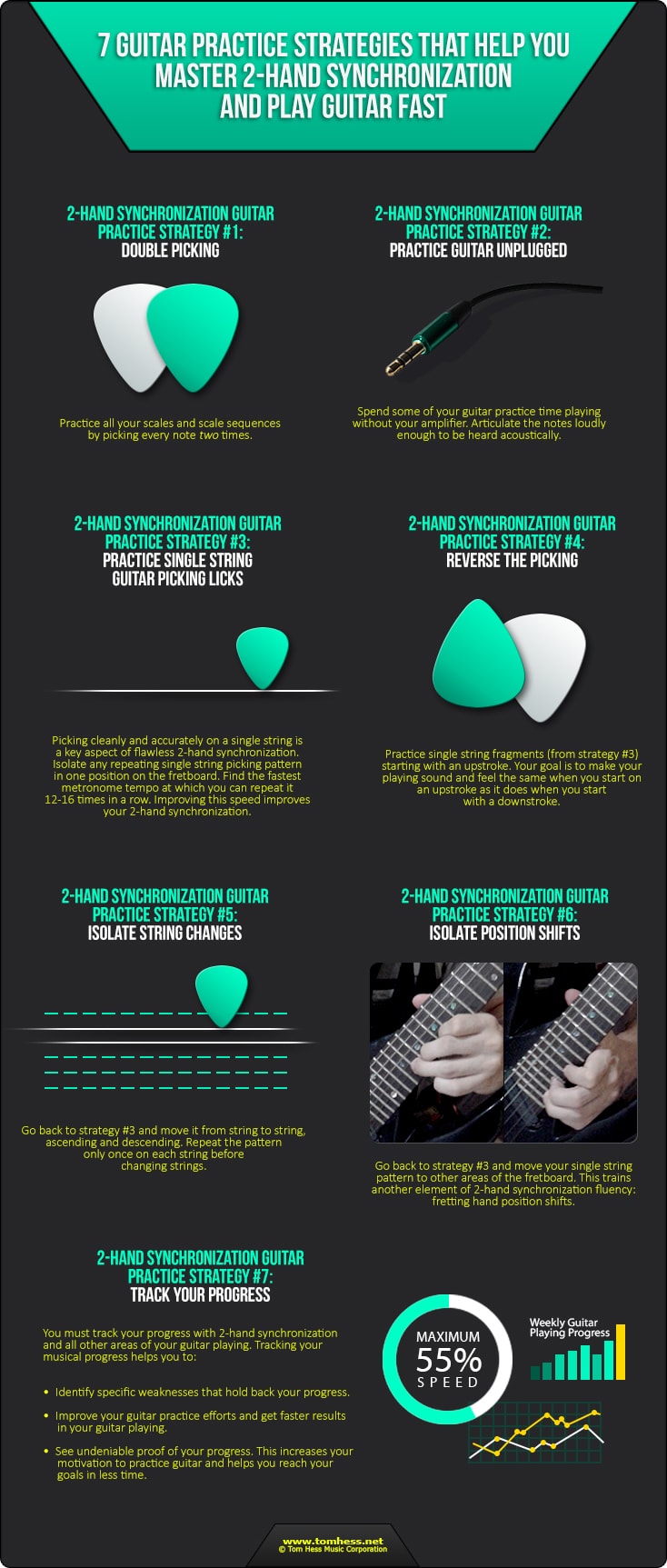Easy Neoclassical Guitar Licks In The Style Of Yngwie Malmsteen
by Tom Hess
Feel Incredibly Easy

EMAIL TO GET ACCESS
By submitting your info, you agree to send it to Tom Hess Music Corporation who will process and use it according to their privacy policy.
In this article, I’ll show you simple neoclassical guitar licks (using the harmonic minor scale)...
...that make it easy to play guitar fast.
These neoclassical guitar licks are in the style of Yngwie Malmsteen.
Feel Incredibly Easy

EMAIL TO GET ACCESS
By submitting your info, you agree to send it to Tom Hess Music Corporation who will process and use it according to their privacy policy.
…the neoclassical guitar licks you are about to see are quite easy to play.
Plus:
These guitar licks sound great whether you play them fast or slow.
I’ll also give you many guitar practice tips that help you play these (and all other) guitar licks faster, cleaner and with better 2-hand synchronization…
…even if you are new to neoclassical guitar playing.
To begin...
...watch this video where I show you the neoclassical guitar licks I'm talking about:
Now that you have a handful of simple neoclassical guitar licks to practice, here are more neoclassical guitar playing tips that help you play guitar fast & clean:
Neoclassical Guitar Playing Tip #1. Learn The Harmonic Minor Scale All Over The Guitar.
The #1 mistake guitar players make when learning any scale (harmonic minor or not) is…
…learning that scale in just one position of the guitar.
For example: when most aspiring neoclassical guitar players think of “A harmonic minor” – take a guess what area on the fretboard they think of?
That’s right – the 5th fret. They don’t think of the harmonic minor scale shape on the 7th fret, 8th fret, 10th fret, 12th fret, 13th fret, 16th fret (etc.)
Here is the problem:
This way of thinking limits your ability to freely play neoclassical solos (and guitar solos in general).
If you want to play (and write) neoclassical guitar solos using the harmonic minor scale – you’d better learn all 7 of its shapes (positions).
This is one of many skills Yngwie (and other great neoclassical guitar players) have mastered. And it’s one of the secrets to their seemingly effortless ability to create awesome harmonic minor guitar licks (and neoclassical guitar solos) on command.
How do you develop this skill in your neoclassical guitar playing?
Check out this excellent video by Guitar Practice Expert Mike Philippov that shows you how:
Note: simply learning the harmonic minor scale in all 7 positions is a good first step for anyone wanting to play neoclassical lead guitar.
But there is more to do if you want to play guitar fast and clean like Yngwie (and other neoclassical guitar masters).
It’s also important to practice harmonic minor scale sequences. This is where you don’t play the harmonic minor scale straight up and down.
Instead: you play a melodic fragment and move it up (and down) the harmonic minor scale.
Harmonic minor scale sequences are the bread and butter of playing guitar fast in the neoclassical style.
Want to see an example of a scale sequence?
Watch this video:
Question: “But Tom Hess, creating harmonic minor scale sequences sounds hard! Shouldn’t I wait until I fully master all 7 shapes of the harmonic minor scale first?”
Answer: No. For 2 reasons:
1. It’s much easier to play guitar fast (and develop all other neoclassical guitar playing skills) if you approach them in a geometric way. Meaning: you work on many areas of your neoclassical guitar playing at the same time instead of waiting to master each skill.
2. It’s easier to play guitar fast using harmonic minor scale sequences compared to playing straight harmonic minor scale shapes. That’s because the motions used to play (most) harmonic minor neoclassical scale sequences are simpler than the motions needed to play the harmonic minor scale straight up and down.
Neoclassical Guitar Playing Tip #2. Learn More About Yngwie’s Guitar Playing Style (And What Goes Into Yngwie’s Ability To Play Guitar Fast)
In my opinion, Yngwie is the most UNDERrated guitar player of all time. He has pioneered a long list of musical innovations most people do not give him enough credit for.
Take his mastery of lead guitar techniqueS (PLURAL) as one example.
Many guitar players would agree that Yngwie’s technical mastery (especially back in the 80s, when neoclassical guitar playing was new) was exceptional.
Much of what goes into one’s ability to play guitar fast (in the neoclassical style and other styles) was brought about by Yngwie.
When you consider this single point in detail, Yngwie’s importance to the world of electric guitar playing becomes very clear.
Fact is, most guitar techniques are around for a long time before someone comes in and truly masters them.
Just consider all the guitar techniques neoclassical guitarists use to play guitar fast.
Techniques like: alternate picking, directional picking, tremolo picking, string skipping, legato playing, 2-hand tapping and intricate metal rhythm guitar riffs.
Consider how LOOOOOONG these guitar techniques were around before someone (Yngwie) came in and single-handedly mastered them all, setting the bar for what it meant to play guitar fast.
It wasn’t until after Yngwie that guitar players finally started mastering ALL of them technically AND musically.
There was no guitar player (prior to Yngwie Malmsteen) who had mastered them ALL to a level not seen or heard before.
Yngwie's pioneering mastery of such a large arsenal of lead guitar techniques goes unnoticed in discussions that compare his musical importance to that of other musicians.
Instead, people tend to lump all techniques that Yngwie mastered into a single category of "technique" as if to imply that all of Yngwie’s skill counts as one thing. It doesn't.
Neoclassical Guitar Playing Tip #3. Work On Your 2-Hand Synchronization
2-hand synchronization is a critical skill to develop if you want to play guitar fast and clean (in every style – neoclassical or not).
Without it, it doesn't matter how fast you move your hands or how many harmonic minor licks you know…
Your fast playing will never sound good
And you’ll have a hard time reaching the level of neoclassical guitar virtuosity of someone like Yngwie.
The gap between your absolute maximum speed and the level at which you can play guitar fast with both hands in sync is called:
… the gap between your potential guitar speed and your usable guitar speed.
Fortunately, there are many ways to get your hands in sync and make your neoclassical guitar playing sound fast, clean and effortless.

When it comes to neoclassical guitar licks, my favorite 2-hand sync training strategy is:
Double picking
As the name implies: you pick every note of your guitar licks two times.
Picking every note 2 times makes your 2-hand synchronization more difficult. Your picking hand is forced to move twice as fast as the fretting hand. This makes it hard to articulate every note clearly while playing fast and makes any mistake more obvious. When you go back to normal playing, it feels easier to play guitar fast and your 2-hand synchronization becomes much tighter.
You can apply this strategy in 2 ways:
- Replace your normal guitar warm up routine with double picking training. Play through your guitar technique exercises using double picking for 10-15 minutes. After the warm-up time is done, go back to playing guitar licks at your usual speed.
- Schedule specific time to apply this strategy in your guitar practice schedule. Select specific guitar technique exercises and practice them using double picking.
Question: “Tom Hess, are there specific exercises that are best used with this double picking strategy?”
Answer: You can apply this strategy to anything during guitar practice. The best exercises are any lead (and rhythm) guitar phrases you want to play faster and cleaner.
Note: On some exercises – triple picking works best. That’s where you pick every note 3 times to maintain the same direction with your guitar pick on string changes.
(A common example of this is sweep picking arpeggios.) However: the principle of double or triple picking works the same way, no matter if you are playing in the neoclassical style or any other style.
Neoclassical Guitar Playing Tip #4. Use Directional Picking
Want to know the #1 shortcut that lets you play guitar fast?
It’s called directional picking.
Compared to alternate picking, directional picking lets you play guitar fast with 33% less effort. How does directional picking work exactly and how does it help you play guitar fast?
Simple:
When you pick on a single string, you use strict alternate picking. (Because there isn’t a better way to play guitar fast on one string than to use alternate picking.)
And when you change strings – you pick in the direction of the next string. And this is when you can reap all the benefits of directional picking and play guitar fast with less effort.
Meaning: you can sometimes use sweep picking to have an easier time playing guitar fast compared to alternate picking your guitar licks.
Here is what this looks like:
Of course, you can use directional picking to play guitar fast in all styles – not only neoclassical. And you can use directional picking to play guitar fast with all scales – not only harmonic minor.
Question: “Tom Hess, does directional picking only work for 3-note-per-string scales? What if I want to play guitar licks from pentatonic scales or other scales that don’t have 3 notes on every string?”
Answer: Directional picking technique helps you play guitar fast with everything you play. The principle of directional picking is to use the shortest possible path to the next note you need to play. Sometimes the shortest path to your next note is to use alternate picking. Other times, the shortest path is to use sweep picking to change strings and NOT use alternate picking. Integrating both mechanics in your guitar licks achieves maximum guitar speed & efficiency with the least amount of effort.
The principle of strict alternate picking is to alternate your pick strokes no matter what…even if doing so forces your hand to make larger and inefficient motions. This forces you to work much harder (and practice a lot longer) to play guitar fast.
Question: “Tom Hess, why do so many great guitar players play guitar fast with strict alternate picking instead of directional picking?”
Answer: Directional picking is a relatively new guitar picking technique. Alternate picking has been around a lot longer. Most guitar players from the 1980s, 1990s and 2000’s did not have anyone to teach them directional picking technique when they were beginners. They developed their guitar speed in spite of the inefficiencies of strict alternate picking… not because it is a superior guitar picking technique. They had to work much harder (and longer) to reach their goals.
Neoclassical Guitar Playing Tip #5. Get Your Thumb Position In Check
The harmonic minor scale has a wider interval between the 6th and 7th note in the scale.
(This interval gives the harmonic minor scale its unique sound.)
That means:
Unlike the major (or natural minor) scale…
… the harmonic minor scale puts an additional demand on your fretting hand.
This stretch occurs in some of the harmonic minor neoclassical guitar licks I show you in the video at the top of this page.
To make the stretch feel easy, pay attention to how you place the thumb of your fretting hand.
You want to place your thumb roughly behind the middle finger of your fretting hand (pointing up towards the ceiling). This keeps your hand balanced and makes it easy to play neoclassical guitar licks (and other types of guitar licks) that require stretching.
Watch this video to see what I mean:
Question: “Tom Hess, what about string bends and vibrato? Doesn't the thumb have to come up over the top of the neck when playing guitar licks that use these techniques?”
Answer: Yes, it does. When you bend strings (or do vibrato), the web between your thumb and index finger gives you the pivot point for doing these techniques.
You need to practice switching between the thumb-over and thumb-behind-the-neck positions when you practice. (It’s not hard and doesn’t take a long time, but it is a nuance you need to focus on.)
Now that you know how to improve your neoclassical guitar playing and play guitar fast using Yngwie-inspired harmonic minor guitar licks, what’s next?
The next step is to transform the rest of your guitar playing – starting with your fretting hand.
To help you with this, I just released a new free eGuide called: mastering fretting hand finger independence for guitar players. It’s free and it shows you easy ways to build a lot of guitar speed in your fretting hand without a lot of practice. Download your copy today and discover guitar speed secrets few guitarists will know.
 About Tom Hess: Tom Hess is a guitar teacher, music career mentor and guitar teacher trainer. He teaches rock guitar lessons online to students from all over the world and conducts instructional live guitar training events attended by musicians from over 50 countries.
About Tom Hess: Tom Hess is a guitar teacher, music career mentor and guitar teacher trainer. He teaches rock guitar lessons online to students from all over the world and conducts instructional live guitar training events attended by musicians from over 50 countries.
 | Forward this article to your friends |

